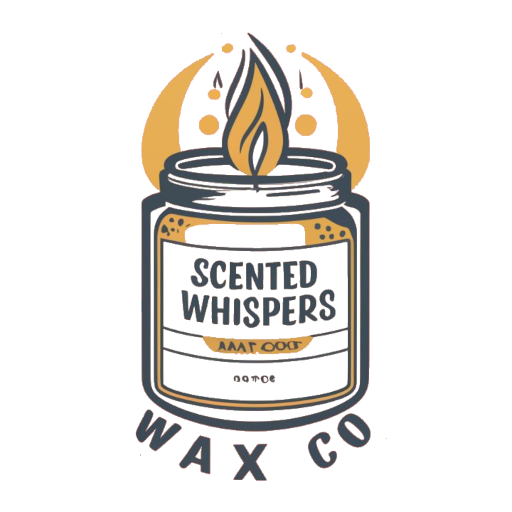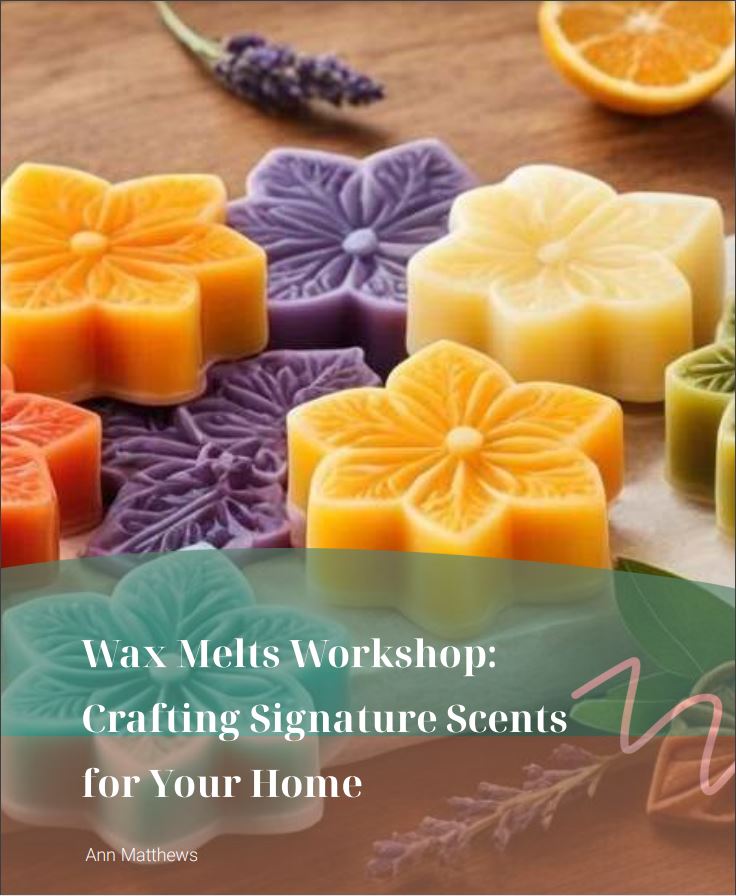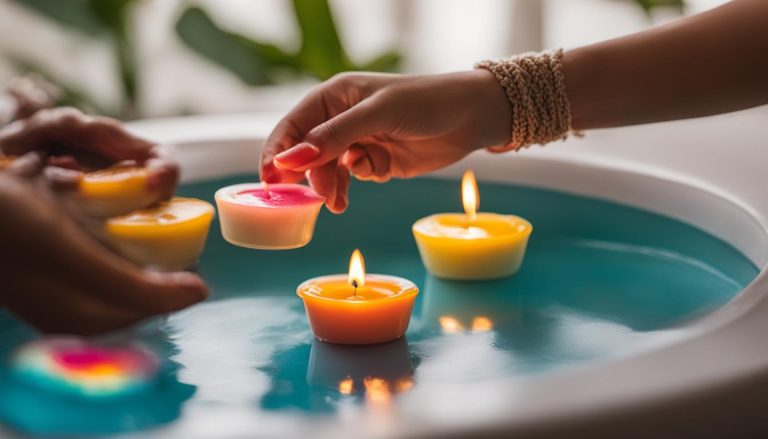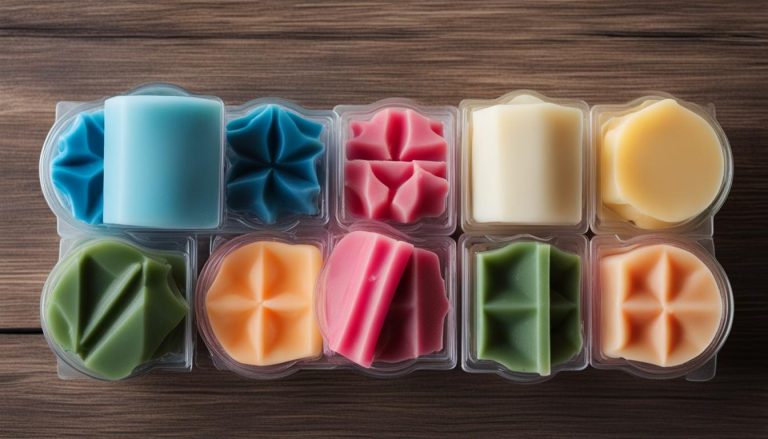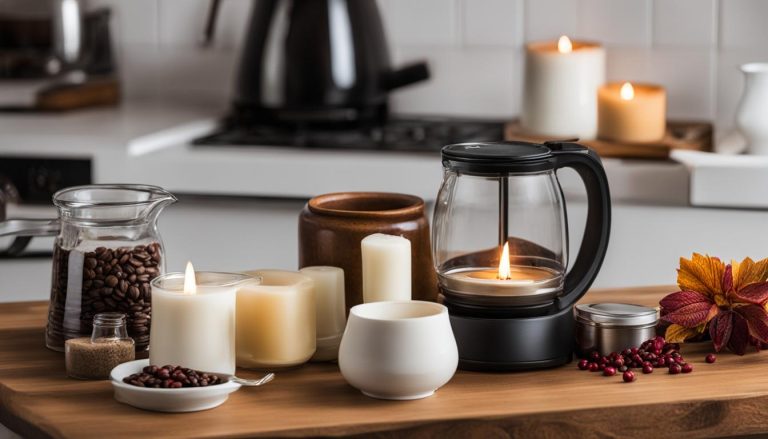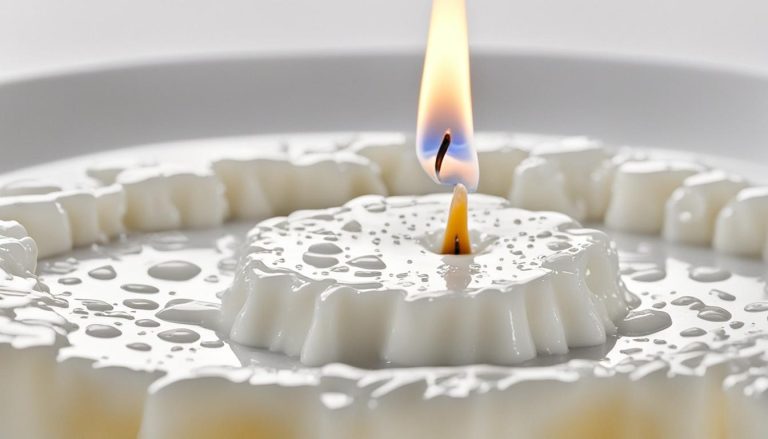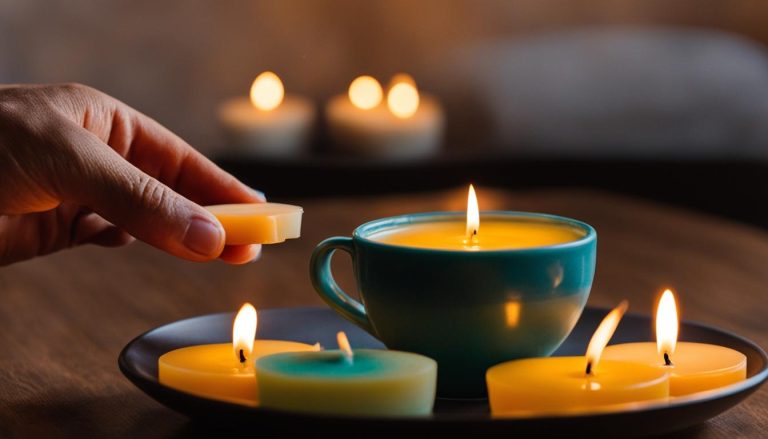Best Wax for Wax Melts – Your Top Choice!
waxmelts.info and its partners may earn a commission if you purchase a product through one of our links
Wax melts have gained immense popularity in recent years due to their safety, versatility, and wide range of scents. Whether you are a candle enthusiast or looking for a fragrant way to enhance your living space, choosing the right wax is crucial for achieving the best results. With numerous options available, it can be overwhelming to determine which wax is the best to use for wax melts.
The top 5 waxes for making scented wax melts include:
- Soy wax
- Beeswax
- Paraffin wax
- Coconut wax
- Palm wax
Soy wax is a popular choice due to its natural, biodegradable, and eco-friendly properties. Beeswax offers a natural scent and a longer-lasting fragrance. Paraffin wax is commonly used in commercial wax melts but has concerns regarding its environmental impact. Coconut wax has a creamy texture and a low melting point, making it easy to use in wax melts. Palm wax, although having concerns about sustainability, has a unique texture and a long-lasting fragrance.
When selecting the best wax for your wax melts, it is important to consider factors such as melting point, eco-friendliness, fragrance retention, and overall performance. Each wax type has its own qualities that cater to different preferences and requirements.
Key Takeaways:
- Choosing the right wax is crucial for achieving the best results in wax melts.
- The top 5 waxes for making scented wax melts are soy wax, beeswax, paraffin wax, coconut wax, and palm wax.
- Soy wax is popular for its natural and eco-friendly properties, while beeswax offers a natural scent and longer-lasting fragrance.
- Consider factors such as melting point, eco-friendliness, fragrance retention, and overall performance when selecting the best wax for wax melts.
How to Choose the Best Wax for Wax Melts
When it comes to making wax melts, selecting the right wax is crucial for achieving optimal results. Consider these important factors to ensure you choose the best wax for your homemade wax melts.
Firstly, prioritize the quality of the wax. Opt for natural waxes like soy wax or rapeseed wax, as they offer numerous benefits. Natural waxes are not only eco-friendly but also promote better health compared to paraffin wax.
Next, consider the compatibility of the wax with wax warmers. Make sure the wax is suitable for the type of warmer you plan to use. This compatibility will significantly impact the overall performance and quality of your wax melts.
Additionally, pay attention to the melting point of the wax. It is advisable to choose a wax with a slightly higher melting point to ensure a stronger structure and ease of removal from the molds without the risk of breaking.
Here are some popular choices for wax melt soy wax:
- Golden Brands 444 Soy Wax
- EcoSoya PB
- NatureWax C-3
- KySoy 125
- GW 464 Soy Wax
These waxes are known for their excellent fragrance retention, smooth appearance, and easy workability. If you plan to use soy wax flakes, the most common form of soy wax for wax melts, it is advisable to melt them using a double boiler or a wax melting device.
By considering the wax quality, compatibility with warmers, melting point, and specific wax options, you can confidently choose the best wax for making wax melts and achieve fantastic results every time.
What are Wax Melts and Their Advantages
Wax melts are smaller cubes of wax that are poured into special molds to create various shapes. They are used with a small warmer that slowly melts the wax cubes and provides a similar scent throw to lighting a candle. Wax melts offer several advantages over traditional scented candles.
- Safety: Unlike candles, wax melts eliminate the risk of an open flame and fire hazard, making them safer to use, especially in households with pets or small children.
- Variety: Wax melts come in a wide variety of shapes, sizes, colors, and scents, allowing for a greater selection and customization options. They can be used as small decorations in different rooms of the house, creating a personalized ambiance.
- Creative Freedom: As a candle maker, wax melts offer more freedom and flexibility in experimenting with scents, colors, and decorative elements. This allows for unique and customized creations that cater to individual preferences and styles.
- Economical: Wax melts are more economical as they allow for the creation of multiple sets of wax melts from a set amount of wax. This results in a larger selection for customers and potentially lowers production costs.
To summarize, wax melts provide a safer alternative to traditional candles, offer a wide range of customization options, allow for creative experimentation, and are cost-effective. Whether you’re looking to enhance the ambiance of your living space or explore your artistic side, wax melts are a fantastic choice.
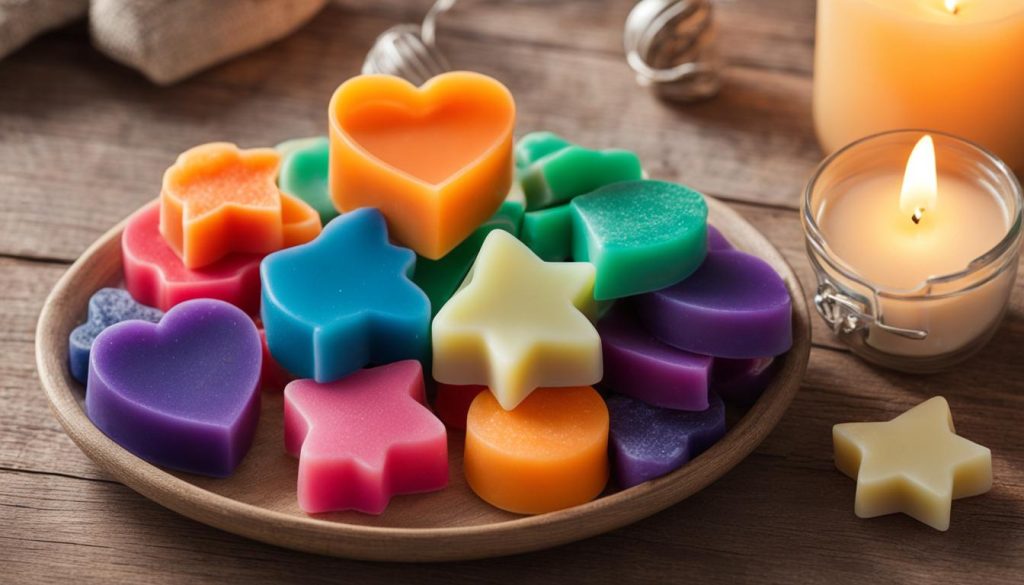
Disadvantages of Wax Melts
While wax melts have many advantages, it is important to consider their disadvantages as well. Understanding the limitations can help you make an informed decision about whether wax melts are the right choice for you. Here are a few key disadvantages to keep in mind:
Absence of Ambiance
One of the main disadvantages of wax melts is that they lack the ambiance created by the flame of a traditional candle. The absence of a visible flame may not provide the same cozy atmosphere as a burning candle. If you enjoy the flickering light and warm glow of candlelight, wax melts may not fully satisfy that aspect of your sensory experience.
Potential for Messiness
Another disadvantage of using wax melts is that wax can get messy and harder to clean up if spilled. Liquid wax may stain surfaces or fabrics, requiring additional effort to remove. While certain precautions can minimize the risk of spills, accidents can still happen and cleaning up melted wax can be a hassle.
Fragrance Weakening Over Time
Over time, the fragrance of wax melts can gradually weaken as the scent is released. When this happens, you may need to add more wax or switch to a different type of wax melt to maintain the desired level of fragrance intensity. This can be a minor inconvenience for those who prefer a consistently strong scent throughout the lifespan of the wax melt.
Despite these disadvantages, wax melts continue to be a popular choice for many candle lovers due to their numerous advantages. It is important to weigh these pros and cons to determine if wax melts align with your preferences and needs.
Different Wax Applications for Wax Melts
When making wax melts, the choice of wax is essential to achieve the desired results. Different applications require specific wax formulations to ensure proper adherence, shape retention, and fragrance capacity. Let’s explore the various wax applications for wax melts.
Container Candle Wax
Container candle wax is specifically formulated for use in candle containers such as jars, tumblers, and glass. It is designed to adhere to the container and may have a softer consistency. This type of wax allows for a clean burn and ensures that the wax stays within the container, preventing any mess. It is a popular choice for those who prefer the convenience of container candles.
Pillar Wax
Pillar wax is formulated for pillar candles, wax melts, tarts, and other wax products that need to hold their shape. It is a harder wax that is specifically designed to easily release from the mold while still maintaining its structure. Pillar wax is ideal for creating tall, elegant candles or intricate wax melt shapes.
Clamshells and Snap Bars Wax
Clamshells and snap bars are thin plastic containers with dividers that hold segments of wax for wax warmers. These wax containers require a rigid wax with a high fragrance capacity and good mold release. The wax needs to retain its shape and easily break apart when released from the container. This ensures that the wax lasts longer and provides a consistent and strong fragrance throw.
Tarts and Wax Melt Wax
Tarts, wax melts, and embeds are similar to clamshells and snap bars but do not have a container supporting their shape. Therefore, the wax used for tarts and wax melts needs to maintain its shape while having good mold release characteristics. This ensures that the wax pops out easily from the molds, allowing for effortless use and consistent results. Whether you prefer adorable wax shapes or simple cubes, the wax used should be able to retain the desired form.
Choosing the right wax application for your wax melts is crucial to achieve the desired result. Consider the specific needs of your project, such as adherence, shape retention, fragrance throw, and mold release, to select the appropriate wax type accordingly.
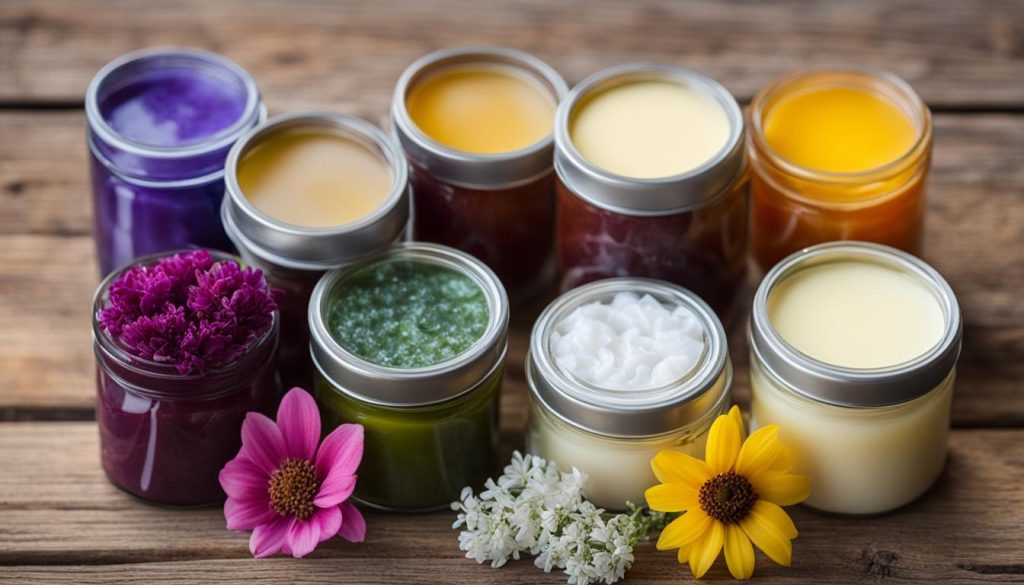
Top Choices for Wax Types for Different Wax Melts
When it comes to creating the best wax melts, choosing the right wax is essential. The type of wax you use can greatly affect the appearance, fragrance capacity, and overall performance of your wax melts. Let’s explore the top choices for different types of wax melts.
For container candles, soy wax is a popular choice. Soy wax is known for its natural, slow-burning properties and excellent scent throw. It provides a beautiful, smooth appearance and has a high fragrance capacity, making your container candles both visually appealing and aromatic.
When it comes to pillar candles, pillar wax is the way to go. Pillar wax is specifically formulated to support the shape of your candles and release easily from the molds. It is a harder wax that maintains its shape and resists frosting, ensuring that your pillar candles look stunning every time.
If you’re making clamshells and snap bars, using pillar waxes is recommended. Pillar waxes have a high fragrance capacity and good mold release, making them perfect for creating wax melts with a strong fragrance and easy clean-up. Your customers will be delighted by the long-lasting scent of these wax melts.
Lastly, for tarts, wax melts, and embeds, using pillar waxes is again the best choice. Pillar waxes have the ability to resist frosting and maintain their shape, resulting in wax melts that not only smell amazing but also look beautiful. For the best performance and aesthetic appeal, consider using blended waxes that combine different types of waxes.
Remember, when choosing the best wax for your wax melts, it’s important to consider the specific needs of your project. Factors such as appearance, fragrance capacity, and melting point should guide your decision. With the right wax, you can create wax melts that not only fill the air with delightful scents but also bring joy to those who experience them.
FAQ
What is the best wax to use for wax melts?
The top 5 waxes for making scented wax melts include soy wax, beeswax, paraffin wax, coconut wax, and palm wax. Among these, soy wax is a popular choice for its natural, biodegradable, and eco-friendly properties.
How do I choose the best wax for making wax melts?
When choosing the best wax for wax melts, consider factors such as melting point, eco-friendliness, fragrance retention, and overall performance. Natural waxes like soy wax or rapeseed wax are generally recommended for their eco-friendly benefits and health advantages.
What are the advantages of wax melts?
Wax melts offer several advantages over traditional scented candles. They are safer to use, provide a wide variety of shapes, sizes, and scents, and allow for more freedom and flexibility in experimenting with fragrances, colors, and decorative elements.
What are the disadvantages of wax melts?
Some disadvantages of wax melts include the lack of ambiance created by a traditional candle flame, the potential for messiness if spilled, and the need to add more wax or switch to a different type when the fragrance weakens. However, these disadvantages are minor compared to the benefits wax melts offer.
What are the different wax applications for wax melts?
There are various wax applications for wax melts, including container candle wax, pillar wax, clamshells and snap bars wax, and tarts and wax melt wax. Each application requires a specific type of wax that meets the desired finished product’s needs.
What is the best wax for different types of wax melts?
The best wax for container candles depends on personal preferences and factors such as appearance, fragrance capacity, and melting point. Soy wax is popular for container candles, while pillar wax is best for pillar candles and wax melts. For clamshells and snap bars, a rigid wax with a high fragrance capacity and good mold release is recommended. Tarts, wax melts, and embeds benefit from using pillar waxes that resist frosting and maintain their shape.
